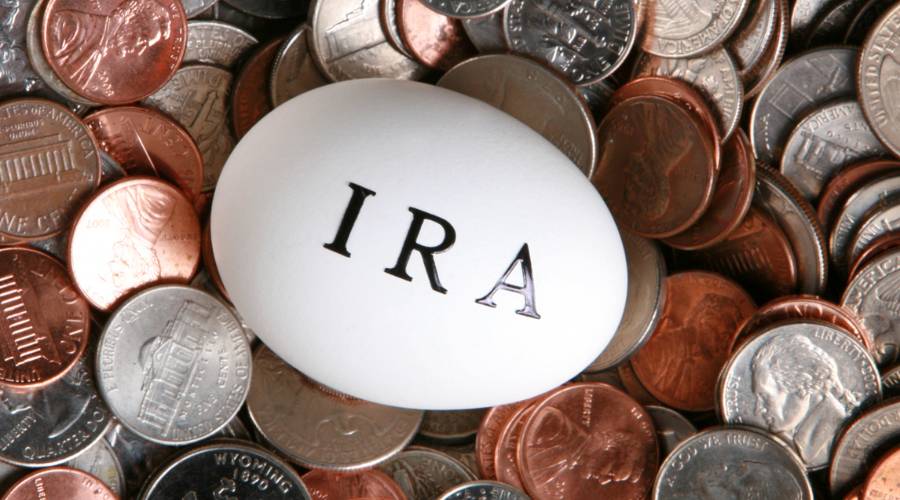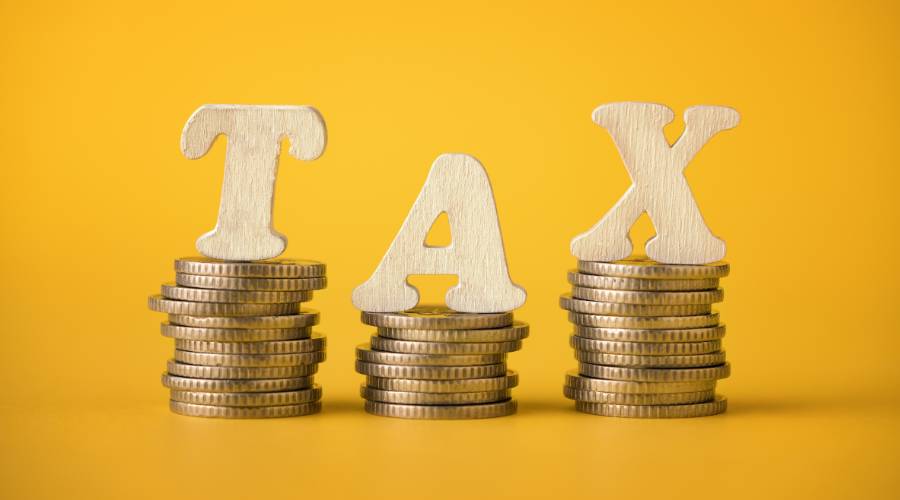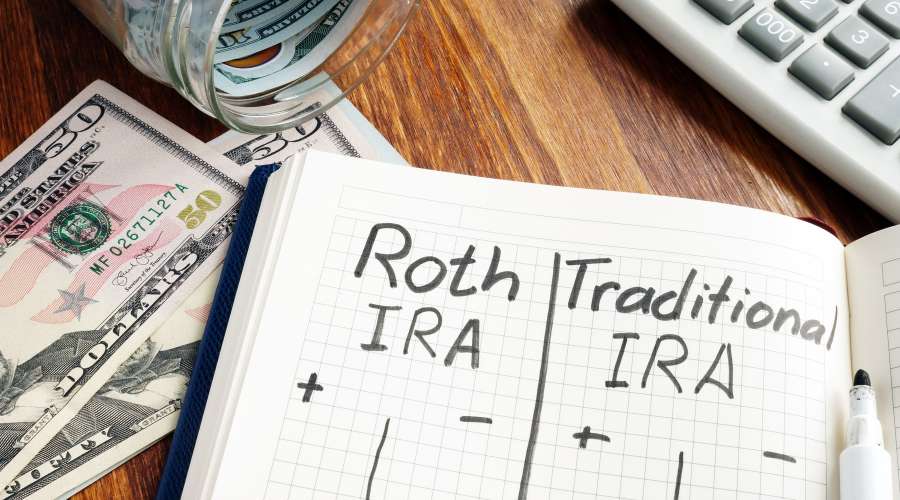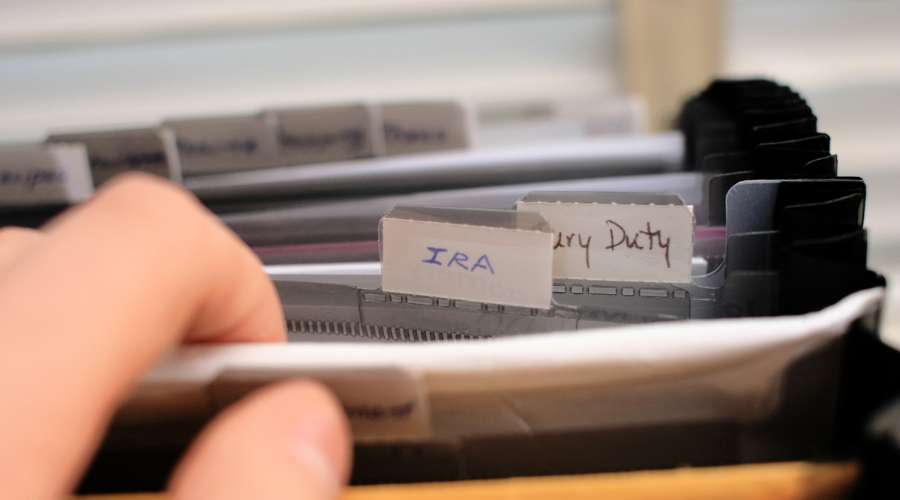A gold IRA is a type of self-directed IRA which allows the account holder to invest in a wider range of assets beyond traditional stocks and bonds. In a gold IRA, the physical gold is held in a secure third-party depository, and the account holder can purchase, sell, or trade their gold holdings just like any other investment.
Gold IRA accounts are typically funded with gold in the same manner as other self-directed IRA accounts (e.g. stock, mutual fund, or bond). Still, unlike traditional IRAs, the account holder is solely responsible for the physical storage and the tax reporting obligations associated with such holdings. Therefore, when a gold IRA is established at a custodian like Goldco, the IRA holder can directly transfer funds from their bank account or brokerage account to their new gold IRA.
If you are interested in investing, make sure to take a look at our highest recommended companies for this year!
>> Click Here For A List Of The 5 Highest Recommended Precious Metals Investment Companies <<
What is Physical Gold?

Physical gold refers to actual gold coins, bars, or other forms of gold held by the investor rather than being held in a paper form such as a mutual fund or ETF. Physical gold can take many forms, including gold coins, bars, rounds, and jewellery. Since a United States federal government guarantee protects gold, it can be used as a payment or a tax-deferred asset.
Moreover, The U.S. Mint also issues gold exchange-traded products (ETPs) that trade on the New York Stock Exchange (NYSE) and the Chicago Board Options Exchange (CBOE), which allows for immediate liquidity for investors with further access to the London Bullion Market Association (LBMA). Gold can be stored in many places depending on personal preference and country laws. For example, American gold is typically stored in a bank or vault in the United States, which minimizes the amount of self-directed responsibility required from investors in terms of storage.
Why is an IRA Eligible for a Gold-Based Investment?
Gold may be a unique asset class in that it is fungible (meaning it can be used as currency) and purchased directly from government agencies. Like other financial instruments, the world economy does not impact its supply. It has the advantage of having identity and integrity, making it a very different type of investment from most other assets listed on financial exchanges.
Gold serves as a universal means of exchange through both barter systems and international trade fairs. Unlike most other precious metals, the gold market is not subject to the whims of a central bank or other financial institution. Although gold is not very liquid compared to other financial investments, it still maintains a strong investment appeal as one of the purest forms of wealth.
Gold can be purchased directly from the U.S. Mint or from several credible dealers that the Mint licenses to sell American Gold Eagles (bullion). Since Goldco is committed to keeping customer funds stored in "Gold IRA" format and without any third-party involvement, there are no taxes on your account, even if you sell the gold that has been contained in your account for decades.
Why is Gold a Preferred Asset Within an IRA?

Gold is a unique asset class that allows investors access to lucrative returns through the price appreciation of its physical form, as opposed to investing in stocks, bonds, mutual funds or other financial instruments. The heightened interest in physical gold among the investing public has been primarily fuelled by concerns over the sustainability of major fiat currencies, especially the U.S. Dollar, which has experienced a steady decline over the past several years relative to other major world currencies and commodities.
The gold IRA can be structured in a variety of ways, depending on the needs and wishes of the investor. For example, one option is to use bullion purchased directly from U.S. government agencies, which is a great alternative for those unable to physically store their gold. A second option is to receive physical gold from an investment or family member who is selling his or her physical possession of gold.
A third option would be to invest with a third party that provides various services, such as minting and storage at the Bank for International Settlements (BIS).
After your gold has been purchased and stored in an official segregated account, you may sell or trade your gold into the upcoming CME futures contract or directly through reputable dealers approved to accept customer funds at the U.S. Treasury department.
Gold IRA is a unique investment vehicle that encompasses many investment opportunities. It enables investors to approach their retirement goals efficiently and cost-effectively while avoiding government reporting and numerous third-party involvement fees. The combination of knowing you can physically own your gold without having to go through substantial financial costs involved with tax reporting is a strong selling point for Gold IRA.
Furthermore, gold can easily be liquidated through an IRA because many of the world's largest banks and brokerage houses are members of the London Bullion Market Association (LBMA), allowing direct access to the international market. The daily trading volume exceeds 20 million ounces, making it one of the most overall markets in size and liquidity.
Gold IRA Tax Reporting Obligations
Each year, the United States Mint publishes a report on the total amount of physical gold held by American citizens valued at $10,000 or more. Gold IRA account holders must report this information to their tax preparer to calculate capital gains tax and other applicable fees properly.
The IRS provides a copy of these publications for free on their website under the reporting requirements for American citizens who hold more than $10,000 worth of gold bullion. The report is updated at the end of each calendar year.
Tax Implications of a Gold-based IRA

One of the benefits of having a gold IRA is the ability to defer capital gains tax. For example, if you invest $10,000 worth of gold in your account at the start of the year, you can sell that same $10,000 worth of gold at a later date without being taxed because it was held in an IRA account. The only time you are required to pay taxes on your gold is when there has been a dollar-for-dollar exchange with cash or other investments.
Another benefit of investing in gold is that you won’t have to pay taxes on your gains every year. Since tax laws differ yearly, it can be hard to know how much money you will have to pay in taxes each year. This can increase over time, making it difficult for small businesses and other IRA investors with high tax brackets.
If you hold physical gold when the money is invested, you won't have to pay taxes on the transaction at the time of sale. However, you'll need to report any capital gains made on your tax return each year and then pay taxes.
Any gold you decide to sell in your account will be considered a capital gain, which is taxable but can be deferred until the account is closed. Capital gains are taxed at different rates depending on your income and are subject to your ordinary income tax rates for American citizens. Capital gains taxes apply to net gains from selling or buying property, such as stocks and bonds.
Reportable capital gains from physical gold held for more than one year are taxed at 0%, 15% or 20%. If you are selling your gold for cash, there will be a taxable event at the time of sale. If your gold is being sold for an investment that is considered equal to your holding in gold, there will be no taxable event, and you can defer the capital gains tax.
Physical gold is typically taxed at a flat dollar value in the United States. For example, if $10,000 worth of gold were purchased and sold for $11,000 after a year of holding it in an IRA account, the capital gains tax rate would be 20%. This indicates that all costs associated with the transaction are included when calculating your tax liability.
If you have a gold IRA, you won’t have to pay taxes on your gains every year. Depending on your income and tax bracket, you must pay taxes on any gold you sell. In most cases, the tax rate is 20%.
Gold is not liquid and cannot be easily bought or sold with cash. Gold IRA accounts are intended for individuals who want to hold physical gold in their retirement accounts for the long term. As a result, you’ll need to deposit small amounts of money into your gold IRA account.
Small dollar amounts can make buying and selling physical gold as an investment easier than having your gold in paper-based investments such as stocks and bonds. Since these funds are transferred from your bank account to your IRA account without a third party involved, there are no fees or additional financial charges associated with the transaction. From a tax perspective, gold is considered a non-traditional IRA investment.
The IRS does not consider gold to be "money" for tax purposes and therefore does not levy sales taxes on the purchase. Additionally, when gold is sold from the IRA, it is considered a taxable distribution; therefore, an additional 10% or 15% will be levied on the gain.
Types of IRAs

There are two main types of IRAs: Traditional IRAs and Roth IRA accounts. With Traditional IRAs, you may not contribute after age 70 1/2 and withdrawals prior to age 59 1/2 incur income taxes. In contrast, Roth accounts only allow contributions at any age with no penalties for early withdrawal.
Taxpayers can convert an existing traditional IRA to a Roth IRA. When the conversion is done, the amount converted is taxed according to current tax laws and is not subject to income taxes in the year of the conversion. A conversion of a traditional IRA into a Roth IRA is a complex transaction.
The taxpayer must be 18 or older. If they are married, they must file jointly with their spouse, who must also be over age 18 and have been living with their spouse for at least one year or has earned income in excess of $10,000 during that year (self-employed persons must provide additional proof). The taxpayer must consent to the change in the IRAs and file Form 8606, United States Income Tax Return for Estates and Trusts, with their tax return.
In addition to these requirements, taxpayers must also report the conversion on their tax return using Schedule R (Form 1040). A Conversion of An Individual Retirement Arrangement or a Converting or Changing Your Investment Strategy Into a Roth IRA message will appear when converting an IRA from a traditional account to a Roth IRA.
The IRS has a favourable view toward converting an existing traditional IRA into a Roth IRA. While there are restrictions regarding IRA conversions by certain high-income taxpayers, there are no income limits for the conversion of Roth accounts. The only eligibility requirement for converting to a Roth IRA is that the taxpayer is under age 70 1/2 and has earned income.
The conversion cannot be made if the taxpayer is married and filing separately. The IRS does not allow taxpayers to make a regular contribution and convert to a Roth IRA in the same year. When an individual has already contributed to an IRA account, they must wait until the following year to make further contributions or convert their existing traditional IRA into a Roth account.
The conversion will be taxed as ordinary income, but the converted amount may be distributed to an alternate beneficiary. If the taxpayer is over age 59 1/2 and has held a Roth IRA for five years or longer, they can withdraw the entire distribution without incurring any income tax on the withdrawal.
Because there are different IRAs, taxpayers can choose which form of account best suits their needs. While traditional IRAs benefit those with higher incomes who want to lower their taxable income by contributing to a retirement account, Roth IRAs generally provide more tax benefits to middle-income earners.
Roth IRAs are particularly attractive for taxpayers with considerable gains from their traditional IRAs. Since both spouses may make Roth IRA contributions, tax-free withdrawals may be directed to one or both spouses. The combined accounts of a married couple can be at most $100,000, which is less than half of what can be contributed annually to an individual account.
What Are the Advantages of a Gold IRA?
There are several benefits of including gold in your retirement account. For one, you can immediately access your gold holdings and take advantage of any potential increases in value over time. In addition, you may defer capital gains tax when you sell your gold at a later date by moving it into a Roth IRA.
You can also transfer the ownership of physical gold between individuals without paying additional fees or taxes on the transaction. You’ll be able to take advantage of the power and effectiveness of owning physical gold by investing directly through an IRA account.
Physical gold is considered an asset far more effective than paper investments. For example, stocks (whether equity or dividend-paying) may be valued by the market or based on share price alone.
Gold, however, is valued based on its actual physical value. There are no stock market fluctuations to artificially increase or decrease the value of securities such as gold. Gold is also an extremely hard asset to counterfeit and therefore ensures the authenticity of your gold.
This makes it an excellent way to store wealth for the long haul and a logical investment for individuals looking to protect their purchasing power from inflation.
Gold IRA accounts can be held in various forms, such as physical gold coins, bars, and ingots. The general rule is that you can purchase up to $5,000 worth of gold annually into your IRA account.
Another benefit of gold IRA accounts is that you can purchase gold from anywhere in the world and still enjoy the tax benefits of your account. Gold may be purchased at much lower prices in certain countries but is often more expensive in the United States due to various factors.
One way to avoid the extra expense is to transfer your gold from a gold dealer in the United States to a local gold broker in another country. The IRS does not regulate dealing with physical assets, but for any move over $10,000, you’ll need to file Form 3911 with the IRS.
What Happens to My Gold if My IRA Account is No Longer Viable?

If your IRA account is no longer viable, or if you decide to close your gold IRA and liquidate your assets, there are a few options for what happens to your gold.
One option is to have the gold physically delivered to you. If you choose this option, the custodian of your IRA will sell your gold holdings and send you the cash proceeds. You can then use these proceeds to purchase new investments or meet any other financial goals. However, it is important to note that if you take a distribution from your IRA before reaching the age of 59 1/2, you may be subject to an early withdrawal penalty unless an exception applies.
Another option is to roll over your gold IRA's assets into a new retirement account. Depending on your eligibility and financial goals, this can be a traditional IRA, a Roth IRA, or a 401(k) plan. To complete a rollover, the custodian of your gold IRA will transfer the assets directly to the new retirement account without you taking possession of the funds. This can be a tax-advantaged way to move your investments to a new account as long as the rollover is completed within 60 days of the distribution from the original IRA.
If you prefer to keep your gold investments within a retirement account but do not want to open a new IRA or 401(k) plan, you can transfer the assets to an existing retirement account that you already have. This can be a convenient way to consolidate your investments and simplify your financial portfolio. However, it is important to note that the rules for transferring assets between retirement accounts can be complex, and it is advisable to consult a financial professional before making any decisions.
If you do not want to roll over your gold IRA into another retirement account and you do not want to receive the physical gold, you may be able to transfer the assets to a friend or family member as a gift. However, it is important to note that there are strict rules governing the gifting of IRA assets, and it is advisable to consult with a financial professional before proceeding.
Frequently Asked Questions
Is a gold IRA a good investment?
Whether a gold IRA is a good investment depends on your financial goals and risk tolerance. Gold has a low correlation with other assets, such as stocks and bonds, which means it tends to perform differently than these other investments. This can make gold an attractive option for diversifying a portfolio and potentially reducing overall volatility.
Gold has a long history of being a haven asset and is often considered a hedge against inflation. However, gold can also be a more volatile investment than other assets, and its value can fluctuate significantly over time.
Can I roll over my gold from an existing IRA to a Gold IRA?
Suppose you already have an existing retirement account that you want to consolidate into or wish to expand your investment options. In that case, you can roll over the assets in your gold IRA into a new account. This can be accomplished by transferring your gold holdings directly between the two accounts. However, as with any transfer, there is risk involved, and certain rules and regulations may apply.
How do I store physical gold?
There are several options for storing physical gold. One option is to store it in a safe deposit box at a bank or other secure facility. Another option is to keep it in a home safe or other secure location in your home. If you are storing a large amount of gold or are concerned about your gold's safety, consider purchasing specialized storage or insurance to protect your investment.
Don't forget to check out our top recommended companies before investing!
